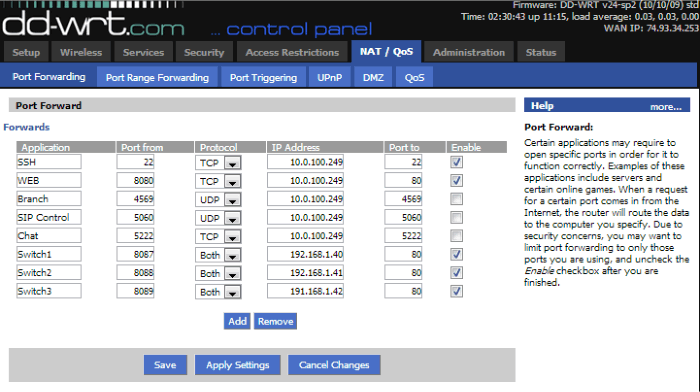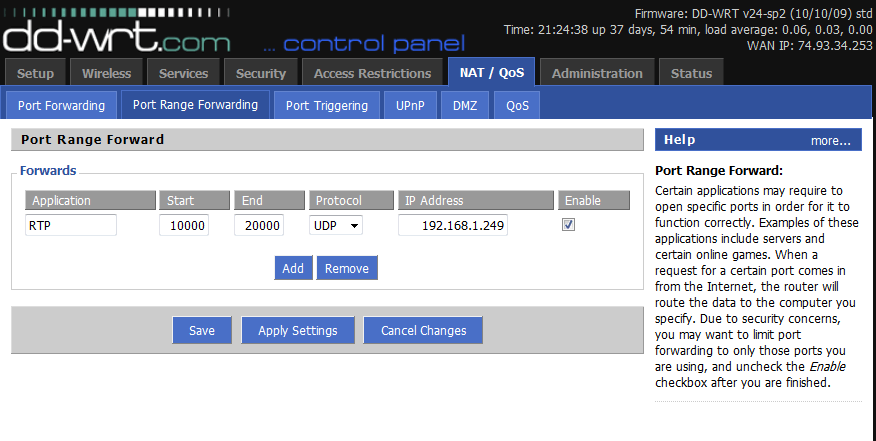Training:Router
Introduction to Routers
A router is a pivotal component in any network structure, functioning as the digital 'traffic controller,' managing data flow between your local area network (LAN) and the broader Internet. The router accomplishes this intricate task through features such as Network Address Translation (NAT), Port Forwarding, and Dynamic Host Configuration Protocol (DHCP), facilitating seamless, secure, and efficient data transmission from your devices to the web and vice versa.
Network Address Translation (NAT)
In the realm of digital communications, IP addresses are limited. Consequently, not every device linked to the Internet can possess a unique public IP address. Rather, your local network maintains a distinct private subnet of IP addresses, represented on the Internet by a single public IP. This is where NAT comes into play. Whenever a device on your network seeks Internet connectivity, the router uses NAT to associate a unique port number with that device. The router then 'remembers' this association, enabling it to direct responses accurately. NAT-related issues, such as inconsistent NAT, often result in connectivity problems. For example, inconsistent NAT might render remote phones unreachable or incapable of receiving calls.
Dynamic Host Configuration Protocol (DHCP)
Routers typically act as DHCP servers, assigning IP addresses to network devices. However, in certain scenarios, a standalone server within the network might undertake the DHCP function. Recognizing the DHCP setup during a site survey is vital to avoid IP conflicts. You need to ascertain how DHCP will be managed, the DHCP range, and an inventory of available static IP addresses for configuring devices like PBX systems.
Port Forwarding
Port forwarding is a router's method of ensuring that incoming packets on specific ports are directed to the appropriate device within the LAN. For instance, remote phones initiate communication by dispatching packets to port 5060. Therefore, this port needs to be forwarded in the router to the internal static IP address of the PBX.
Port forwarding can be categorized into three types:
Single Port Forwarding: All incoming WAN traffic on a specific port is directed to a certain LAN IP via that port. For instance, external port 5060 can be forwarded to the PBX IP on port 5060.
Port Range Forwarding: All incoming WAN traffic on a range of ports is directed to a certain LAN IP via that range of ports. For instance, external ports 10000 to 20000 can be forwarded to the PBX IP on ports 10000 to 20000.
1 to 1 NAT: All incoming WAN traffic on a specific port is directed to a certain LAN IP via a different port. This is usually utilized when the required port is already occupied. For example, if a user hosts their own webpage and port 80 is used, you can forward external port 8080 to the PBX IP on port 80.
A correct router configuration is critical to maintaining a stable and secure network. Misconfigurations can lead to inaccessible devices, security risks, or even total network shutdown. Therefore, mastering the management of these fundamental router functions is a crucial skill for network professionals.
Table 1: Single Port Forwarding
Application Name |
Port |
Protocol |
To IP Address |
Remote Administration |
80 |
TCP |
PBX Internal IP |
SSH Support |
22 |
TCP |
PBX Internal IP |
SIP |
5060 |
UDP |
PBX Internal IP |
Branch Office |
4569 |
UDP |
PBX Internal IP |
Table 2: Port Range Forwarding
Application Name |
Port |
Protocol |
To IP Address |
RTP |
10000-20000 |
TCP & UDP |
PBX Internal IP |
Table 3: 1 to 1 NAT
Application Name |
External Port |
Internal Port |
Protocol |
To IP Address |
Alternate Remote Administration |
8080 |
80 |
TCP |
PBX Internal IP |
Remote access
to devices such as the PBX system empowers network administrators or support personnel to modify configurations or resolve issues from any location, bypassing the need for on-site presence. This functionality amplifies the efficiency of network management and technical support provision. For optimal accessibility and visibility of the PBX system, it's advised to forward port 80 (utilized for remote admin access) and port 22 (utilized for Secure Shell or SSH access) to the PBX's internal IP address. With this setup, you can input <publicIPaddress>/ippbx into the browser of any PC with Internet connectivity to access the admin login page for the PBX system.
Please note: If the end user already uses port 80, you will have to employ the 1 to 1 NAT port forwarding method to map a different external port (such as 8080) to the internal port 80. This is due to the PBX system's inability to modify the web access port.
Router Forwarding Interface
Example: DDWRT DDWRT is an open-source firmware compatible with a broad array of routers. It offers a user-friendly and relatively standardized configuration interface for setting up port forwarding. (An accompanying screenshot would showcase a router interface loaded with DDWRT Open Source firmware illustrating the configuration screen for Port Forwarding.)
Understanding and navigating these interfaces is essential for establishing and maintaining solid network configurations. Proper setup facilitates seamless communication between your network devices and the wider Internet, thereby enhancing your network's overall performance and security.

